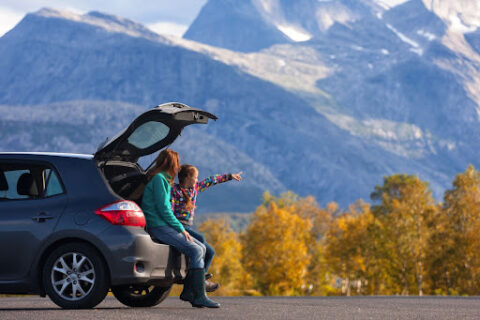Gather Your Supplies
The safest way to ship your bike is in a sturdy bicycle box. Use the original box that held your bike if you have it. If not, ask your moving company or a local bike shop for a proper bike box. Boxes for shipping bikes are available in several sizes, so choose the boxes that best fit your bike types.
Additional bike-packing materials to gather include:
- Disassembly tools
- Specialty bike tools
- Scissors or carpet knife
- Foam padding and bubble wrap
- Zip ties
- Cardboard pieces
- Permanent marker
For the bike padding, choose foam tubes like those that wrap around plumbing pipes. You can find the right padding at home goods and hardware stores.
You also need packing tape to seal up the box. If you plan to use tape directly on your bike or bike parts, use masking tape or electrical tape, since they won’t damage the paint on your bike frame.
Disassemble Your Bike
To fit snugly in its moving box, you must remove protruding parts from your bike. Your goal is to reduce your bike to a sleek, compact shape.
Bicycle parts to disassemble for the move include the following:
- Pedals
- Handlebars
- Seat post and saddle
- Front wheel
- Derailleur and hanger
- Any racks, fenders, and decorations
Leave your handlebar stem in place on the bike after you take off the handlebars. Replace the hardware (nuts, bolts, and faceplate) on the handlebar stem after removal to keep the parts safe. Leave your shift levers for the brakes and gears on the handlebars, but don’t overstretch the cables.
Pad and Cushion the Parts
After all of the parts are disassembled, wrap the components in padding or bubble wrap. For painted parts of the bike frame, use the foam tube padding and secure it to the components with zip ties or tape. If your foam is on the flimsy side, wrap it with cardboard to reinforce the foam.
Use the bubble wrap or foam to wrap bike parts including the handlebars, pedals, and seat. You can place smaller components like pedals in a small box to keep them safe after wrapping.
When wrapping the front wheel, place caps on the axle ends to keep them from poking through the box. Cushion the wheel or use special padded wheel bags available from a bike shop before packing the front wheel in the box.
Be careful when packing your disc brakes. If possible, remove all calipers, cushion them, and secure them with tape or zip ties to the bike. Place all removed brake hardware in a bag together so no parts are lost. During transport, separate the disc brakes with a pad spreader.
Prepare Additional Bike Parts for Transit
When you remove the front wheel, your front forks can accidentally squeeze together or be deformed. The forks can also pierce through the moving box. Use a spacer between the fork dropouts to keep the forks the right distance apart. A small piece of PVC pipe works for this purpose, or purchase a spacer from your bike shop.
You can zip tie larger bike components, including the seat and seat post, to the bike or secure them in the bike box. If you want to attach parts to the bike, make sure that no metal rubs on metal. Use pieces of cloth or cardboard between the components to protect rubbing parts.
Attach the handlebars on one side of the bike and your front wheel on the opposite side. You may have to adjust the parts as you attach them to keep them as close to the bike frame as possible. The goal is to make the total package as low-profile as possible, so don’t let the handlebars stick out over or past the frame after attachment.
Before placing the cushioned bike in your packing box, make sure none of the parts are loose or moving. Secure any moving or loose parts. Add a label directly to the bike that lists your name, address, and contact information in case the packing box is destroyed.
Secure and Label the Box
After placing your prepared bike and its parts in the packing box, make sure that nothing rattles or shakes around in the box. If the hardware pieces or pedal box moves around, tape them to the inside of the box. Don’t seal your bike box until all parts are secure.
Check to see if any metal parts rub on the inside of the box. Use additional cardboard or foam to protect the box from punctures or rubbing.
Label the outside of the box with your name and the contents of the box. Also, write the word fragile all over the box, so the movers and others know to handle the contents with care.
For specialty packing materials including bike boxes and bubble wrap, contact Wheaton World Wide Moving today. We offer moving services including high-quality packing supplies for all of your sporting and adventure equipment.



